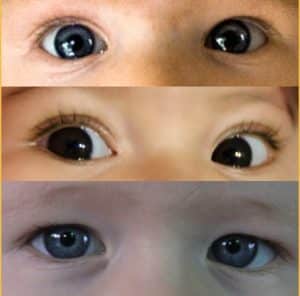Let’s go back a little over 10 years to when, for Ad Age, Maureen Morrison reviewed (what were then) the previous 30 years of efforts to ban advertising aimed at children. The Federal Trade Commission (FTC) was upset about sugar back in 1978, and the concern was tooth decay. How quaint was that, compared to the multiple possible sugar-related worries that now assail parents?
To the breakfast cereal industry, the scrutiny was annoying but not threatening. Manufacturers renamed products, like from Sugar Crunchie-Munchies to Honey Crunchie-Munchies, and patted themselves on the back. The FTC kind of gave up. After that, something happened every decade or so.
Morrison wrote,
[A] aside from the 1990 Children’s Television Act (which in part limits the amount of time broadcasters can devote to ads in children’s programs) and the 1998 Children’s Online Privacy and Protection Act (which deals with parental consent and data collection), self-regulation is still the order of the day in adland.
Self-what?
Like many other myths, rumors of the existence of self-regulation have persisted throughout the years. As in many other areas of life, like local police forces, for instance, self-regulation in the food biz is a joke. In 2012, about one-third of American children and teens were already overweight or obese. A contemporary news article recounted how cereal companies aimed their advertising in two streams: the less nutritious products were pitched to children, the more nutritious ones to parents.
In that year, the giants (General Mills, Kellogg, and Post) spent “an average of $156 million per year in marketing children’s cereals.” Check this out:
The cereals that were promoted to children, had 85 percent more sugar, 65 percent less fiber, and 60 percent more sodium.
The Yale Rudd Center for Food Policy and Obesity was busy that year. A study by Kelly Brownell and Jennifer Harris verified the astonishing fact that given the choice, kids prefer high-sugar cereal to the low-sugar variety. In addition, they learned that, when giant corporations invest part of their earnings in the careers of various politicians, strange things can happen. They also ran up against the topsy-turvy world of corporate logic, which is about as valid as fatlogic.
They ‘splained it to us
The companies, in their wisdom, and led by General Mills and Kellogg, claimed that children simply will not eat breakfast cereal unless it is highly sweetened. Well, even if that is so… perhaps they could just leave the addition of sugar to the parents. And maybe parents could simply opt against sugar. What is a two-year-old going to do about that? Starve? Ride a skateboard to the corner store? Order from Amazon?
Also in 2012, The Journal of Pediatrics published the results of a small study undertaken by the University of Missouri. The researchers used MRI technology to scan the brains of young teens who were shown equal numbers of food product logos and non-food logos, from which they learned that children who are already obese are more vulnerable than normal-weight children to the blandishments of TV food ads.
Ryan Jaslow reported for CBS,
The study authors say companies spend more than $10 billion annually on food and beverage advertisements to children, while 98 percent of those products that make it to television are high in fat, sugar or sodium.
Your responses and feedback are welcome!
Source: “Is Ronald McDonald the new Joe Camel?,” AdAge.com, 04/23/12
Source: “Cereal Makers Spend $156 Million to Get Kids Hooked on Sugar,” TheDailyStar.com, 06/26/12
Source: “Sugar Rush: Why We Can’t Trust Cereal Companies to Self-Regulate,” TheAtlantic.com, 06/22/12
Source: “Obese kids more susceptible to food advertisements, brain scan study suggests,” CBSNews.com, 11/30/12
Images by Hamish Darby, Will Keightley, Javcon117/CC BY-SA 2.0
